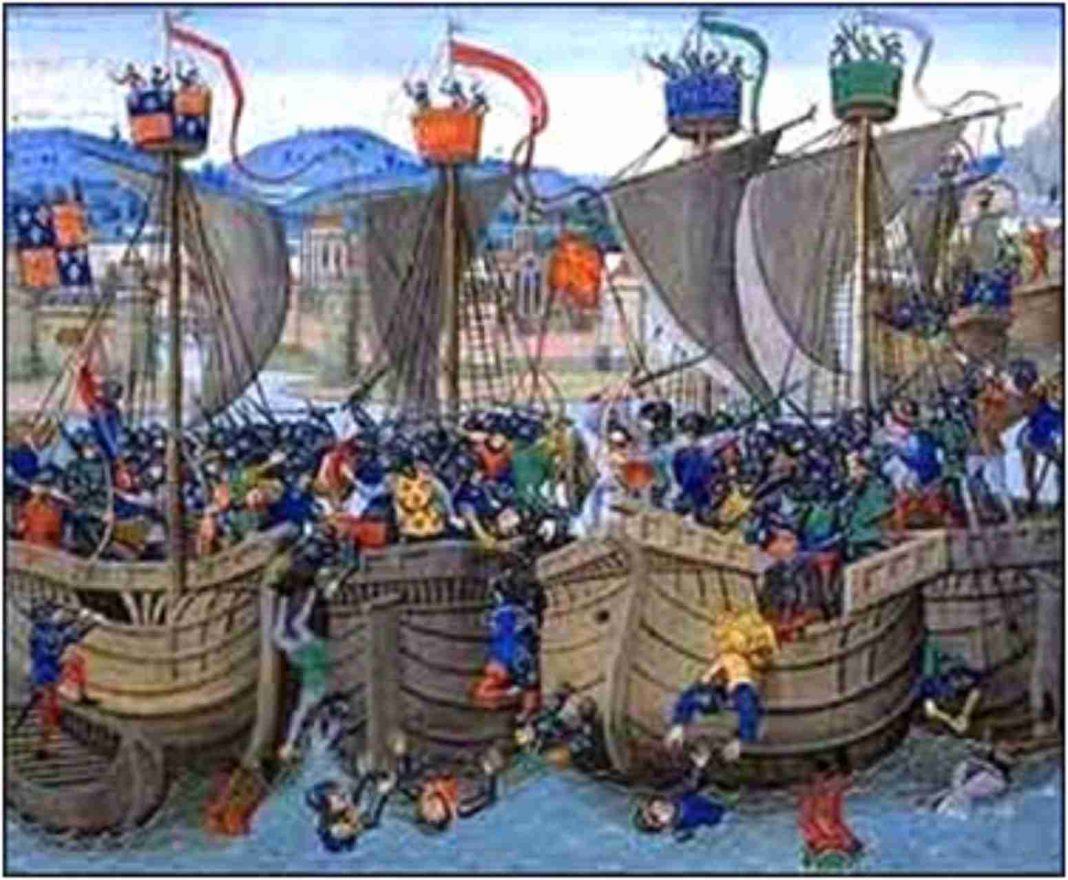The Cinque Ports once played a major role in the defence of the country. By the end of the 14th century, however, their involvement in naval expeditions for the Crown declined and so did their power – or so historians have always led us to believe.
Dr Craig Lambert of Southampton University disagrees with this established theory and, at a talk hosted by the Winchelsea Archaeological Society (WAS) at Winchelsea Church on Saturday June 14, queried the basis on which historians had come to that conclusion.
The established historical narrative, from Montagu Burrows in the 19th century to N.A.M. Rodger in the 20th, is based on the fact that the number of Cinque Port ships involved in naval expeditions fell off rapidly by the end of the 14th century. Dr Lambert argues that these numbers have been looked at in isolation. Over the past 10 years he has painstakingly collated the medieval records of ships impressed for naval service by the crown and compiled an impressive database of ships, the ports they came from, the masters who captained them and the men who sailed and fought on them. He has discovered that the decline in the number of Cinque Port ships impressed was matched by a similar decline from other ports around the country.
Dr Lambert argues that the reasons were political, strategic and fiscal. On the political side, he notes that shipowners had become very prosperous and formed an influential constituency in parliament. In the later part of the 14th century, they were increasingly protesting at the interruption to their trading activity by the impressments of their ships, claiming that the merchant fleet was being decimated by the Hundred Years War. Previously, historians have taken these claims at face value, but Dr Lambert notes that their sources were very narrow and that, in fact, the number of English ships engaged in trade was increasing. The complaints of the shipowners look like special-interest pleading.
Dr Lambert argues that the Crown (which became weaker under Richard II and Henry IV) responded to these complaints by drawing more ships from smaller ports which, in the South East, were outside the Confederation of Cinque Ports. Strategically it became feasible for the crown to tap smaller ports, which would have had smaller ships, because, after victories in France, there were fewer big expeditions and less need for large ships.
There was also a fiscal reason. The medieval Crown relied on taxes on exports of wool for much of its revenue. In the later 14th century wool exports declined, as England started to keep most wool production for the domestic manufacture of cloth, which was exported instead of wool. Parliament would not allow the taxation of cloth exports, so the Crown needed to assist the wool trade by not impressing ships from the big ports from which wool was exported. The resulting pressure on smaller ports for ships might have been one of the triggers, so far unexplored by historians, of the Peasants Revolt.
Dr Lambert concludes that the Cinque Ports were as prominent as centres of maritime activity in the late 14th century and much of the 15th century as they were in the 13th and early 14th centuries, their traditional heyday according to earlier writers.
Dr Lambert has also been looking at the impact of the wars with France and others on Cinque Port communities. He has estimated that as much as 25 per cent of the male population is likely to have served on naval expeditions, not just as sailors, but as archers and men-at-arms employed to fight the ships. Naval activity would therefore have given these communities a strongly militarised character, not too dissimilar to later garrison and naval towns.
The next talk being hosted by WAS will be “To be a pilgrim: the medieval pilgrim trade from the Ancient Towns” by Dr Gillian Draper of the British Local History Society. It will take place on Saturday July 16 at 3pm in Winchelsea Church. All are welcome. Entry is free to members and under-17s, and £4 to others.
Richard Comotto is a member of the Winchelsea Archaeological Society



